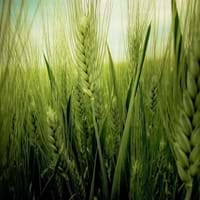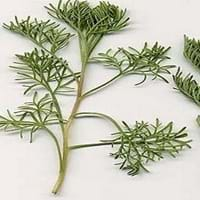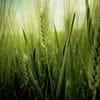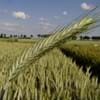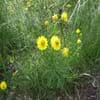Life Span
Annual
Perennial
Origin
Hybrid origin, Western Asia
Southern Europe
Types
Durum, Einkorn, Khorasan, Norin 10, Winter Wheat
not available
Number of Varieties
Not Available
Habitat
agricultural areas
Temperate Regions
USDA Hardiness Zone
3-8
5-8
Sunset Zone
2a, 2b, 3a, 3b, 4, 5, 6, 7, 8, 9, 14, 15, 16, 17, 18, 19, 20, 21, 22, 23, 24
2b, 3a, 3b, 4, 5, 6, 7, 8, 9, 10, 11, 12, 13, 14, 15, 16, 17, 18, 19, 20, 21, 22, 23, 24
Habit
Upright/Erect
Upright/Erect
Minimum Height
Not Available
Minimum Width
Not Available
Flower Color
Yellow
Yellow, Gray
Flower Color Modifier
Bicolor
Not Available
Fruit Color
Light Green, Tan, Sandy Brown
Non Fruiting Plant
Leaf Color in Spring
Green, Light Green
Gray Green
Leaf Color in Summer
Green, Light Green, Tan
Gray Green
Leaf Color in Fall
Green, Gold, Tan
Gray Green
Leaf Color in Winter
Light Green
Not Available
Leaf Shape
Long linear and narrow
Long hair-like leaves
Plant Season
Spring, Summer, Fall, Winter
Spring, Summer, Fall
Sunlight
Full Sun
Full Sun
Growth Rate
Very Fast
Medium
The pH of Soil
Neutral
Neutral
Soil Drainage
Average
Well drained
Bloom Time
Early Summer
Late Summer
Tolerances
Drought
Not Available
Where to Plant?
Ground
Ground, Pot
How to Plant?
Seedlings
Cuttings, Seedlings
Plant Maintenance
Medium
Medium
Watering Requirements
Water Deeply
Average Water Needs, Keep the Soil well drained
In Summer
Lots of watering
Lots of watering
In Spring
Moderate
Moderate
In Winter
Average Water
Average Water
Soil pH
Slightly Acidic
Neutral
Soil Type
Fertile, Well drained, Well-aerated
Loam
Soil Drainage Capacity
Well drained
Well drained
Sun Exposure
Full Sun
Full Sun
Pruning
Remove damaged leaves, Remove dead branches, Remove dead leaves
Cut back old stems to the ground, Remove damaged leaves, Remove dead branches, Remove dead leaves
Fertilizers
All-Purpose Liquid Fertilizer, Nitrogen, Phosphorous, Potassium
All-Purpose Liquid Fertilizer, Complete balanced fertilizer
Pests and Diseases
Bacterial leaf streak and black chaff, Powdery mildew, Rust
Free of serious pests and diseases
Plant Tolerance
Drought
Drought
Flowers
Showy
Insignificant
Flower Petal Number
Single
Not Available
Fragrant Bark/Stem
Yes
No
Foliage Texture
Coarse
Medium
Foliage Sheen
Matte
Matte
Attracts
Birds
Not Available
Allergy
no allergic reactions
Skin irritation
Aesthetic Uses
Not Used For Aesthetic Purpose
Farmland, small hedge, Wild gardens
Beauty Benefits
Good for skin and hair, Protects from sun damage, Weightloss
Not Available
Environmental Uses
Air purification
Air purification
Medicinal Uses
Antibilious, Antihydrotic, Antipruritic, Antipyretic, Antivinous, Sedative, Stomachic
Antiseptic, Digestive, Liver problems, Skin Disorders, Tonic
Part of Plant Used
Seeds, Stem, Straw
Branch, Fibres, Flower Stalk, Gum, Leaves, Twigs
Other Uses
Biomass for fuel, Used for laundering, Used in paper industry
Oil is used in mosquito repellents, Used for fragrance, Used to make hair tonic
Used As Indoor Plant
Showy
No
Used As Outdoor Plant
Yes
Yes
Garden Design
Not Available
Herb, Vegetable, Mixed Border, Rock Garden, Wall
Botanical Name
TRITICUM aestivum
ARTEMISIA abrotanum
Common Name
Bread Wheat, Common Wheat
lad's love , southern wormwood , old man , boy's love , appleringie , sitherwood
In Hindi
गेहूं
southernwood
In German
Brotweizen
Eberraute
In French
pain de blé
aurone ou citronnelle
In Spanish
El pan de trigo
Artemisia abrotanum
In Greek
ψωμί ολικής αλέσεως
Artemisia abrotanum
In Portuguese
pão de trigo
Abrótano
In Polish
chleb pszenny
Bylica boże drzewko
In Latin
Triticum
Southernwood
Phylum
Magnoliophyta
Magnoliophyta
Class
Liliopsida
Magnoliopsida
Family
Poaceae
Asteraceae
Clade
Angiosperms, Commelinids, Monocots
Angiosperms, Asterids, Eudicots
Tribe
Triticeae
Anthemideae
Subfamily
Pooideae
Asteroideae
Number of Species
Not Available
Season and Care of Bread Wheat and Southernwood
Season and care of Bread Wheat and Southernwood is important to know. While considering everything about Bread Wheat and Southernwood Care, growing season is an essential factor. Bread Wheat season is Spring, Summer, Fall and Winter and Southernwood season is Spring, Summer, Fall and Winter. The type of soil for Bread Wheat is Loam and for Southernwood is Loam while the PH of soil for Bread Wheat is Neutral and for Southernwood is Neutral.
Bread Wheat and Southernwood Physical Information
Bread Wheat and Southernwood physical information is very important for comparison. Bread Wheat height is 60.00 cm and width 15.20 cm whereas Southernwood height is Not Available and width Not Available. The color specification of Bread Wheat and Southernwood are as follows:
Bread Wheat flower color: Yellow
Bread Wheat leaf color: Green and Light Green
Southernwood flower color: Yellow and Gray
- Southernwood leaf color: Gray Green
Care of Bread Wheat and Southernwood
Care of Bread Wheat and Southernwood include pruning, fertilizers, watering etc. Bread Wheat pruning is done Remove damaged leaves, Remove dead branches and Remove dead leaves and Southernwood pruning is done Cut back old stems to the ground, Remove damaged leaves, Remove dead branches and Remove dead leaves. In summer Bread Wheat needs Lots of watering and in winter, it needs Average Water. Whereas, in summer Southernwood needs Lots of watering and in winter, it needs Average Water.
